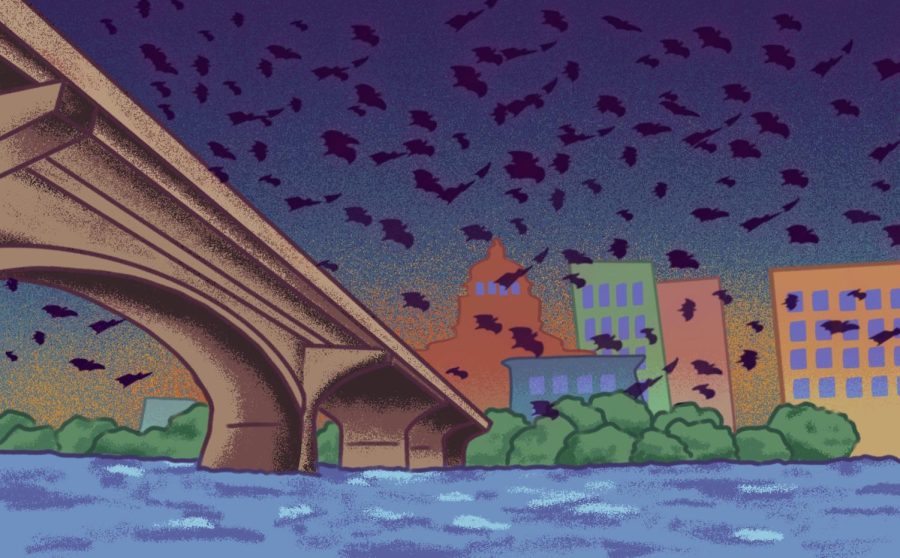Students propose solution to help diseased bats
October 21, 2022
UT students proposed a solution to detect white nose syndrome, a disease affecting bats in Austin, through the International Genetically Engineered Machine competition — a global event to showcase academic initiatives relating to synthetic biology that can be useful in practice.
“Synthetic biology is basically applying engineering principles to biology,” said Jeffrey Chuong, iGEM member and biology and biomedical engineering sophomore.
In 2020, scientists detected white nose syndrome in a cave in the Texas Hill Country, said Keaton Brown, iGEM member and senior biochemistry major. The syndrome comes from a fungus that grows on the skin of bats while they are hibernating, causing them to scratch their skin and deplete their fat stores, he said. As a result of the fungus, the bats end up starving to death.
Under the guidance of associate professor Jeffrey Barrick and assistant professor Dennis Mishler, the iGEM team took to proposing a synthetic biology solution for the disease affecting the bats in Central Texas. The syndrome has also been noted across North America.
“We do a lot of genetic engineering (and) modification of living organisms,” Brown said. “We’re just kind of trying to solve real world problems with what we know about biology.”
For the project, the group placed an organism – Acinetobacter baylyi, or ADP1, — in an environment to detect Pseudogymnoascus destructans, the organism that causes white nose syndrome. It is common in synthetic biology to use a foundation, or chassis organism, and place it in an environment with another organism and wait for enough exposure to occur for a change in DNA sequencing to be detected, said Barrick, associate professor of molecular biosciences and head of the lab.
The iGEM team created a plan to place ADP1 in an environment that contains P. destructans in order to detect how the fungal organism of white nose syndrome is able to vary the foundation organism’s DNA sequences. To find a solution for white nose syndrome, the team first has to understand the genetic composition of the fungus and how it impacts the bats.
Due to the danger and difficulty of placing ADP1 in an infected bat cave environment, the team intends to use soil samples that contain the white nose fungal spores instead, Barrick said.
Chuong and Brown participated in a synthetic biology class with Barrick and Mishler, while Neil Tian, an iGEM member and biochemistry sophomore, learned about the project as a researcher for Mishler. The iGEM team has been working under their guidance to provide a solution to detecting white nose syndrome since January, said Chuong.
Brown said that the depletion of the bat population is socially important to Austin, and implementing a local tie was key to their project.
The University’s 2022 team will present their final project virtually at the iGEM virtual conference at the end of the month.
“We’re hoping that future teams or just a broader synthetic biology community can use our system to detect other diseases or other pathogens besides P. destructans,” Brown said. “We’re hoping that they can use our system as a foundation for creating effective and efficient biosensors.”



